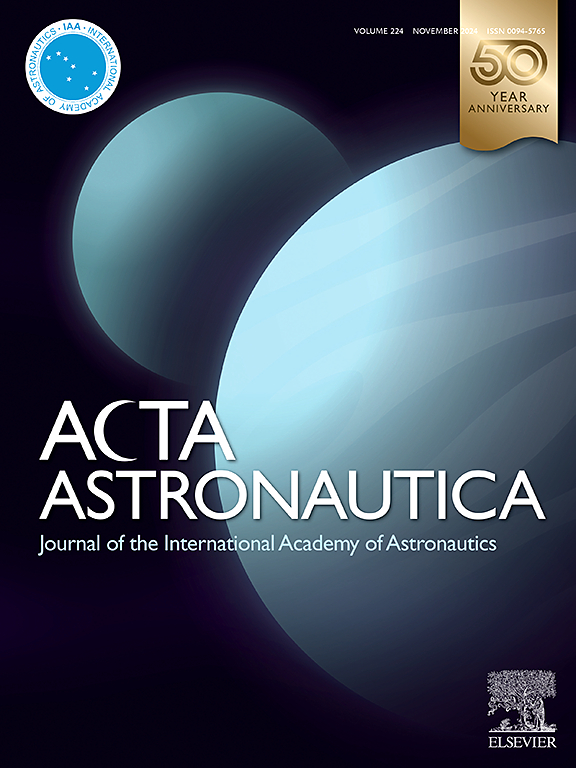脉冲喷射对煤油燃料超音速燃烧器流场结构和燃烧性能的影响
IF 3.1
2区 物理与天体物理
Q1 ENGINEERING, AEROSPACE
引用次数: 0
摘要
本文介绍了在马赫数为 3 的以煤油为燃料的超音速燃烧器中进行煤油燃料脉冲喷射的情况。在实验中,利用大流量机械脉冲喷射器以 40 至 212 Hz 的频率喷射煤油。利用高速 Schlieren 图像和壁压分析了不同喷射频率对波族和煤油燃烧性能的影响。最初,脉冲喷射会在煤油点燃后引起波系的间歇性变化,导致燃烧不稳定。然而,143 赫兹的最佳喷射频率可稳定波系。此外,脉冲喷射还缩短了煤油点火延迟时间,最明显的缩短发生在 113 赫兹时。最后,脉冲喷射的煤油平均燃烧强度低于稳定喷射。然而,143 赫兹处的瞬时燃烧强度与稳定喷射相似,这在整个燃烧过程中占了很大一部分。总之,143 赫兹脉冲喷射煤油可在马赫数为 3 时实现高效稳定的燃烧。本文章由计算机程序翻译,如有差异,请以英文原文为准。
Effects of pulse injection on the flow field structure and combustion performance in a kerosene-fueled supersonic combustor
This paper describes the pulse injection of kerosene fuel in a kerosene-fueled supersonic combustor at a Mach number of 3. A high-flow mechanical pulsed injector was utilized to inject kerosene at frequencies ranging from 40 to 212 Hz in experiments. High-speed Schlieren images and wall pressure were employed to analyze the influences of various injection frequencies on the wave family and kerosene combustion performance. Initially, the pulsed injection causes intermittent changes in the wave family after kerosene ignition, leading to combustion instability. However, an optimal injection frequency of 143 Hz stabilizes the wave family. Additionally, pulsed injection reduces the kerosene ignition delay time, with the most notable reduction occurring at 113 Hz. Finally, the average combustion intensity of kerosene with pulse injection is lower than that of steady injection. However, the instantaneous combustion intensity at 143 Hz is similar to steady injection, which constitutes a significant portion of the overall combustion process. In summary, pulse injection of kerosene at 143 Hz could achieve efficient and stable combustion at a Mach number of 3.
求助全文
通过发布文献求助,成功后即可免费获取论文全文。
去求助
来源期刊

Acta Astronautica
工程技术-工程:宇航
CiteScore
7.20
自引率
22.90%
发文量
599
审稿时长
53 days
期刊介绍:
Acta Astronautica is sponsored by the International Academy of Astronautics. Content is based on original contributions in all fields of basic, engineering, life and social space sciences and of space technology related to:
The peaceful scientific exploration of space,
Its exploitation for human welfare and progress,
Conception, design, development and operation of space-borne and Earth-based systems,
In addition to regular issues, the journal publishes selected proceedings of the annual International Astronautical Congress (IAC), transactions of the IAA and special issues on topics of current interest, such as microgravity, space station technology, geostationary orbits, and space economics. Other subject areas include satellite technology, space transportation and communications, space energy, power and propulsion, astrodynamics, extraterrestrial intelligence and Earth observations.
 求助内容:
求助内容: 应助结果提醒方式:
应助结果提醒方式:


